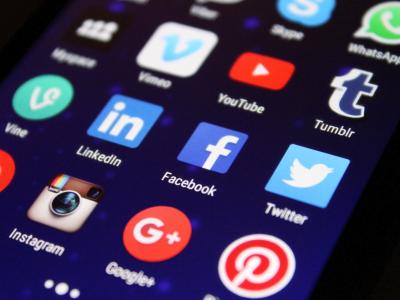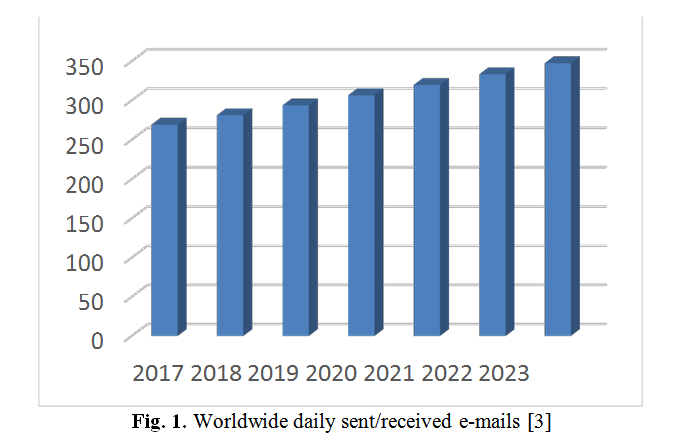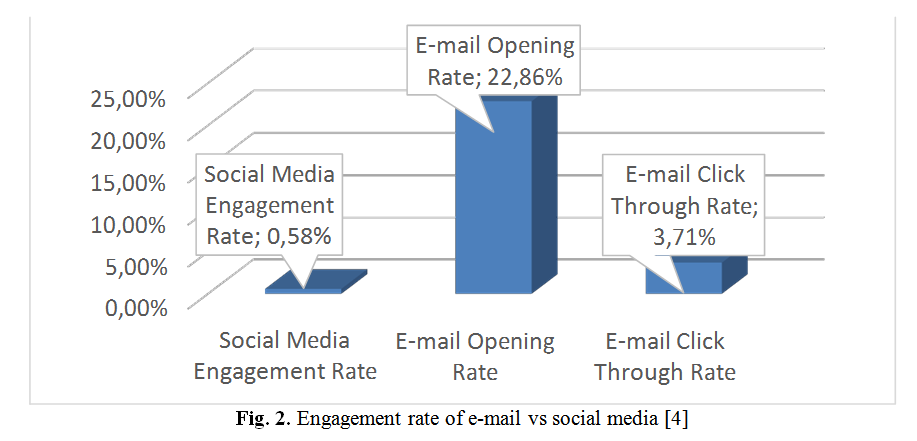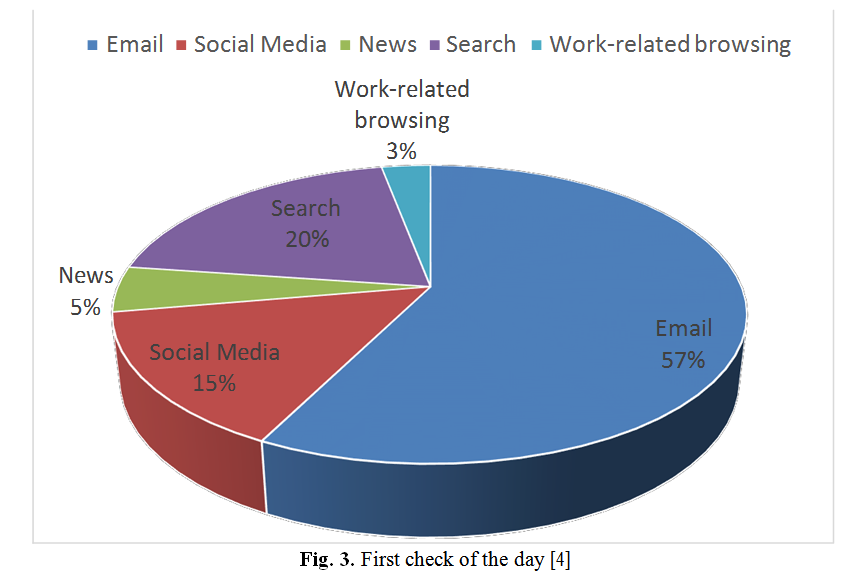The Impact of New Technologies on Digital Marketing Strategy

Abstract
The digital environment is becoming more sophisticated nowadays and marketers must find new ways in which they can reach and engage their potential market in order to grow the business.
Direct email marketing is facing challenges mainly because of the new EU regulations (GDPR) and new online behaviour on the target audience. Nowadays, the recipients are demanding a more personalized, straight to the point communication that must be tailored to their needs. This paper aims to present the current situation of the digital marketing environment, focusing on the direct email marketing strategy’s challenges and to identify the ways in which the adoption and implementation of Augmented Reality can help the marketers overcome these challenges to generate user-appealing content and run successful campaigns.
Table of Contents:
1. Introduction
2. Discussion
3. Conclusion
1. Introduction
Ryan and Jones (2009) [1] think online marketing is not necessarily about understanding new technologies, but rather about understanding the new consumer. More important than understanding new technologies is understanding how the target audience uses these technologies and the use of this understanding to reach the potential client easier. Lambert (2002) [2] believed the Internet was and continues to be a force that facilitates and encourages change, developing new business sectors and remodelling existing ones. Lambert’s vision is clearly highlighted by the rapid development and adoption of online commerce.
The need to adopt a clear marketing strategy in the on-line world is a must for companies that want to adapt to the new business environment and who want to attract customers. The formulation of a digital marketing strategy helps the company to conduct its online business in an organized and informed way, with well-established and measurable goals (SMART), focusing on what is important and relevant to the business. This paper will focus on e-mail marketing strategy, trying to identify the main challenges the marketers are facing in this field and to see how new technologies like Augmented Reality can help to overcome these challenges.
2. Discussion
E-mail marketing trends and development.
E-mail marketing is considered to be a base tool for many years now. One may think about it as being an outdated practice that requires knowledge and high investment in order to perform.
But looking at the data in the Fig. 1 below, we can clearly see that e-mail is more important than one could think at this moment. The numbers provided by Statista (2019) [3] are showing that the number of the worldwide daily sent and received e-mails are seeing a positive path, from around 250 billion in 2017 to almost 350 billion in 2023.

E-mail’s popularity can be affected by online marketing tools like Social Media, as marketers can think that you can easily get in front of big audiences for free in platforms like Facebook, Instagram and Twitter. This approach is far from being accurate, as nowadays you may not reach even your followers for free on social media. A study conducted by Opti monster Company (2019) [4] is showing that e-mail marketing delivers a higher engagement rate in comparison with social media. If we are looking at the average opening rate that stands around 23% and even at the click- through rate of 3,7% we can clearly see that the engagement rate of social media (0,6%) is inferior to e-mail (Fig. 2).

The same study is showing that users are attached to their e-mail, most of them checking their e-mail first time in the morning (57%). Social media comes second, at the big distance, as it can be seen in the chart below, with only 15% of the respondents checking their social media profile first (Fig. 3).

All the above are showing the importance that e-mail marketing still plays in the online environment and emphasize the importance of adjusting the e-mail strategies in order to fit the changing online environment and efficiently reach the target audience.
E-mail marketing challenges
To be able to formulate a clear e-mail marketing strategy, the marketers must understand what their main challenges are nowadays. After reviewing the available studies and literature, we can present the main challenges as being the following:
➔ Engagement rate: a study conducted by DMA [5] is showing that the number of opened and red e-mails is steady year-to-year and is correlated with the age of the recipient, the older users tending to read around 60% of their received e-mails. The same study is showing that the main driver behind opening an email is brand recognition followed by an interesting subject line.
➔ Conversion rate: the main goal of e-mail marketing is to convert the opened e-mails into actual purchases. For this, the marketers have to deliver e-mails that are personalised in order to keep customers interested with relevant and targeted information.
➔ Personalisation: this challenge can be simply summarised as “different people – different needs”. The recipients nowadays are too busy and tend to ignore the information that does not seem relevant to them. This is where the personalization needs to come into scene as a personalized message means more customer relevance leading to improved sales.
➔ Customer retention and brand awareness: The company must pay attention to its customer, to learn his habits and preferences and deliver the message in a way that will fit perfectly with him. Being proactive and serving the right information to the right customer will create the needed relation that will increase customer retention and drive up brand awareness.
Augmented Reality – benefits that can be used to overcome the challenges in e-mail marketing Augmented reality offers companies new ways to attract and retain customers and to market their products. Augmented reality facilitates personal marketing, messages sent to potential customers can be personalized, giving them the impression that the message was created for them. Another plus of this technology is its novelty, which attracts the attention of potential customers. Looking at this technology from a social point of view, it offers the user the opportunity to share his experience with other users through social media, generating the so-called viral marketing of augmented reality [6]. Researchers discuss augmented reality as “Augmented Reality
Experiential Marketing”, highlighting the effect of this technology on consumer experience [7].
Using this technology in marketing campaigns shows that the emphasis is not only put on the promoted product or service, but on the full experience of the client. Finally, if the experience of using Augmented Reality is positive, it will increase brand loyalty, brand visibility, and perhaps most importantly, it will lead to positive feedback for the company from the customers who will disseminate this information online.
Augmented reality presents benefits that can be used by marketers to improve their e-mail campaigns as follows:
➔ High degree of personalisation: Augmented reality empowers the marketers to create a unique and personal experience for the clients.
➔ User-centric technology: The client/user is seen as the main focus when implementing Augmented Reality. This can lead to a stronger and closer relationship between the brand and its customers.
➔ Novelty: Being a state-of-the-art technology, augmented reality has the potential to attract new users who are curious about it. Brands can make advantage of this and generate brand awareness.
➔ Collaborations: It facilitates the collaboration between companies and clients to generate new ideas for products and services, tailored to customer needs.
➔ Ease of use: The technology is easily implemented and the user needs only a smartphone to unleash the full potential of it.
The benefits of using augmented reality in marketing levitate around consumer experience. This technology saves time for the customer, being a practical and useful way to try to form an early opinion about a desired product
3. Conclusion
The current paper has shown that e-mail marketing is still a very important marketing tool in the context of the constant-changing online environment. This environment generates challenges for e-mail marketing and companies have to respond and adapt in order to keep up with the changes. The arise of new technologies like Augmented Reality must be seen as opportunities by the marketers and their benefits should be used to formulate a competitive marketing strategy that will develop the business. Augmented reality can help to build the image of a trustworthy and innovative company in the mind of the client, who takes all steps to ensure the well-being of its customers and to make their lives easier. The image of an innovative brand that adopts the latest available technologies is very important in customers’ conception, as they are identifying themselves with products they use [8].
Authors:
PRODEA Bogdan-Mihai [1]
CONSTANTIN Cristinel Petrisor [2]
[1] Transilvania University of Brasov (ROMANIA)
[2] Transilvania University of Brasov (ROMANIA)
Contributo selezionato da Filodiritto tra quelli pubblicati nei Proceedings “3rd International Conference Inclusive and Sustainable Economic Growth. Challenges, Measures and Solutions - 2019”
Per acquistare i Proceedings clicca qui.
Contribution selected by Filodiritto among those published in the Proceedings “3rd International Conference Inclusive and Sustainable Economic Growth. Challenges, Measures and Solutions - 2019”
To buy the Proceedings click here.



